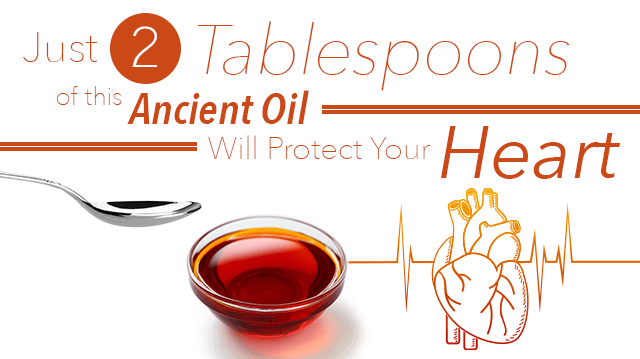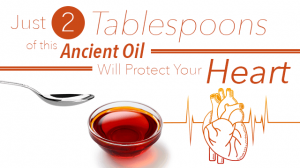
When reading ingredient labels, we generally associate “palm oil” with toxic hydrogenated and trans fats. It turns out that this is a misnomer in the mainstream nutrition industry. The oil you want to avoid is specifically palm kernel oil, while palm fruit oil is an entirely different product.
Red palm oil actually has a number of valuable nutrients and nutritional benefits to offer a person who wishes to consume a real-food based traditional or ancestral diet. When we eat this way, we support the liberal consumption of minimally processed natural fats, such as grass-fed butter, coconut oil, avocado oil and pastured or wild animal fats. Red palm oil has been consumed by traditional cultures for generations but is only now gaining attention in the Western world as an addition to this healthy fats group.
Should you add red palm oil to your diet? Read on for all the nutritional details, plus how to shop for a good product, and how to use it in your kitchen.
The amazing health benefits of red palm fruit oil
This nutritious oil is a staple on the African and Asian continents, where it was regarded as a healing food even by the ancient Egyptians. Now you too can gain the health benefits from the natural compounds found in red palm oil:
Tocotrienols and tocopherols: Vitamin E compounds.
Carotenoids: Vitamin A and C compounds.
Phytosterols: Healthy plant fats that reduce inflammation.
Squalene: A natural compound that protects the immune system.
Coenzyme Q10: Known to protect heart health.
The phytonutrients that give red palm oil its vibrant orange hue are the antioxidants beta-carotene and lycopene. These are also found in colorful vegetables such as squash, carrots and tomatoes. Red palm oil is a dense source of these nutrients, so you can gain benefits from consuming only 1–2 tablespoons per day.
Red palm oil is high in healthy medium-chain fatty acids. It contains about 45 to 50 percent saturated fat. It is easy to digest and remains stable for storage or cooking.
How to find the best red palm fruit oil
The red palm oil you buy should be organic and minimally processed. This ensures that no harsh chemicals were applied to the growing environment.
Minimal processing involves a traditional method — softening, steaming, pounding and drying. The oil is removed via a gravity-driven filtering system, which is very slow and ensures only the best oil remains.
In contrast, commercially produced oils are often extracted using harsh chemical solvents and over-processing, which results in the removal of the valuable antioxidants. Do not purchase a palm oil product that does not have its vibrant red-orange color intact.
Sustainability concerns with palm oil
 The mainstream media is rife with messages about how the production of palm oil is destroying rainforests and jungle habitats. Unfortunately, this is largely true in regards to commercial palm oil production.
The mainstream media is rife with messages about how the production of palm oil is destroying rainforests and jungle habitats. Unfortunately, this is largely true in regards to commercial palm oil production.
However, the traditional methods of producing red palm oil are alive and well in many smaller artisanal communities. You can support this small-scale production by purchasing only from companies whose product is certified by the RSPO (Roundtable on Sustainable Palm Oil). This organization certifies that the methods used by a particular producer are in keeping with the sustainability standards of the World Wildlife Fund (WWF).
How to eat and cook with red palm oil
Some people do not enjoy the flavor of red palm oil, but others find it highly versatile. It pairs well with earthy, Eastern-inspired dishes using warm spices such as turmeric, curry and chili. Savory dishes generally work best — feel free to use red palm oil for stir-fries, eggs and meat dishes.
Red palm oil also makes a great salad dressing if mixed with more liquid oils, such as olive or avocado oil.
Why not add this healthy nutrient-rich traditional oil to your kitchen arsenal? It offers a great alternative to the frequent use of coconut oil.
Check out some inspiration for making your own delicious salad dressings with beneficial fats.
—Liivi Hess
Liivi is an Integrative Nutrition Health Coach and is training to become a doula. She inspires women to find peace and personal power by taking control of health and fertility naturally. Liivi‘s passion is ancestral nutrition and primal lifestyle design. She and her partner Will live between Toronto, Canada and Queenstown, New Zealand.
Sources:
http://www.researchgate.net/profile/Ravigadevi_Sambanthamurthi/publication/5882855_Palm_fruit_chemistry_and_nutrition/links/0912f50d537348b6ba000000.pdf
http://apjcn.org/update%5Cpdf%5C2003%5C3%5C369-372%5C369.pdf
http://www.ingentaconnect.com/content/nsinf/fnb/2000/00000021/00000002/art00013
http://search.proquest.com/openview/a8c241958866f504679891416e0091a7/1?pq-origsite=gscholar
http://www.berkeleywellness.com/healthy-eating/diet-weight-loss/article/red-palm-oil
http://www.who.int/vmnis/vitamina/prevalence/mn_vitamina_map_1995.pdf
http://www.ncbi.nlm.nih.gov/pubmed/20823490
http://www.ncbi.nlm.nih.gov/pubmed/16846498
http://www.ncbi.nlm.nih.gov/pubmed/20095133
http://www.coconutresearchcenter.org/article%20red%20palm%20oil.htm
http://www.cambridge.org/us/books/kiple/palmoil.htm

